Wave pool opposition in the desert: Will Kelly’s wave damage the La Quinta neighborhood?
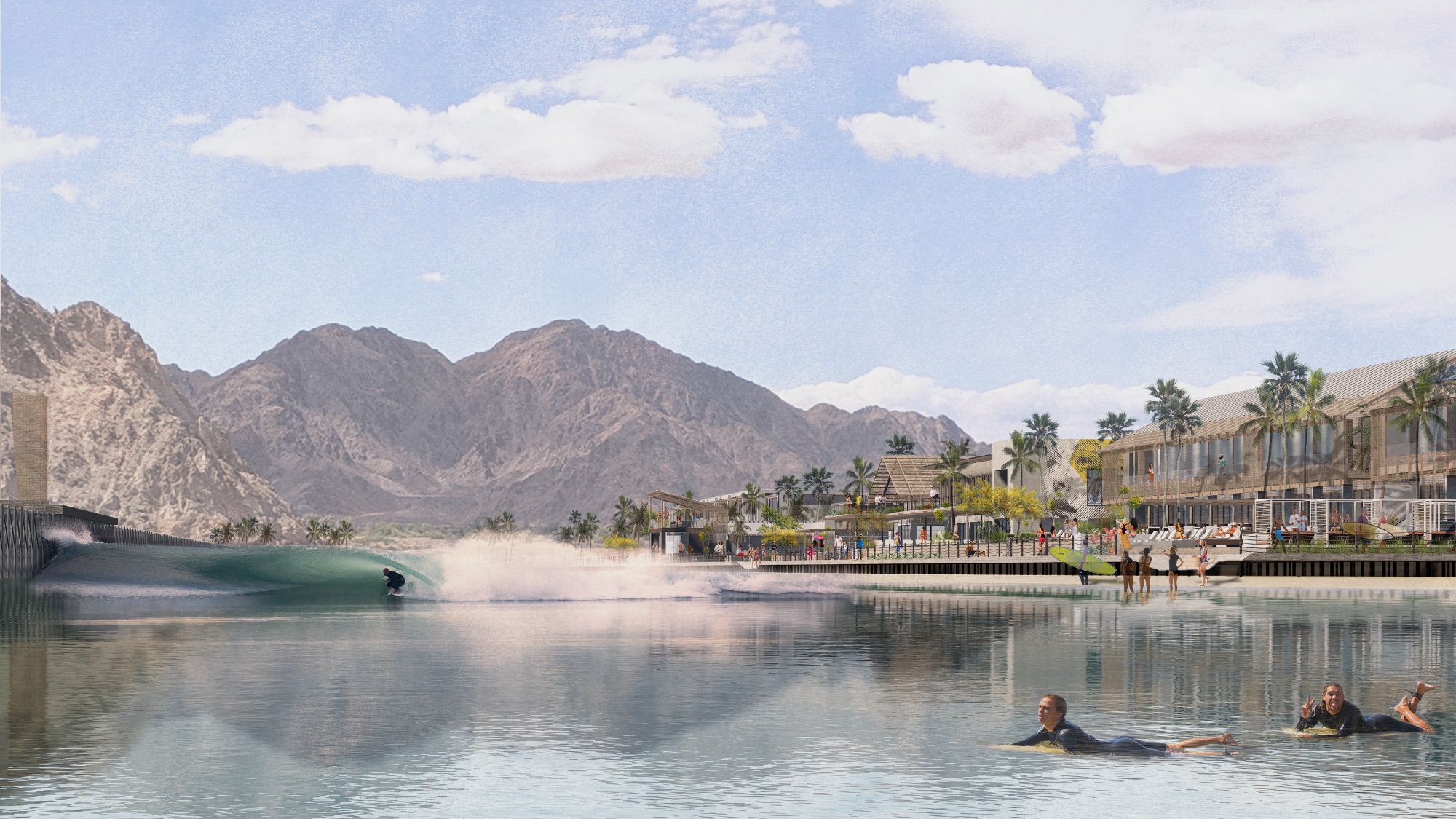
As residents take aim at wave pool developments across the globe, we do a deep dive into one project on the front lines, Coral Mountain in La Quinta. Will this wave pool drastically alter the quality of life for nearby residents? Or are neighbors just opposed to any construction done after their own house was built?
The recent 3 1/2 hour town meeting discussing the pros and cons of the Coral Mountain wave pool development project was exactly what every journalist dreads – quiet, polite and well organized. No raised voices, name calling or chair hurling. At the end of it, even mayor Linda Evans was moved to say, “this went better than expected.”
The meeting marks the first time the proposed development has been discussed publicly. Now that the draft Environmental Impact Report (EIR) has been completed many questions have been answered. Or not. Depending on whether you’re siding for or against. And some valid points, both of contention and to concur, were raised by both sides.
While it was stressed several times at the live gathering that this report is a draft and no decision either way on the development has been made yet, some of those against it seemed keen to suggested the presiding councilors presented it in a way that a decision has already been made, in favor of the development.
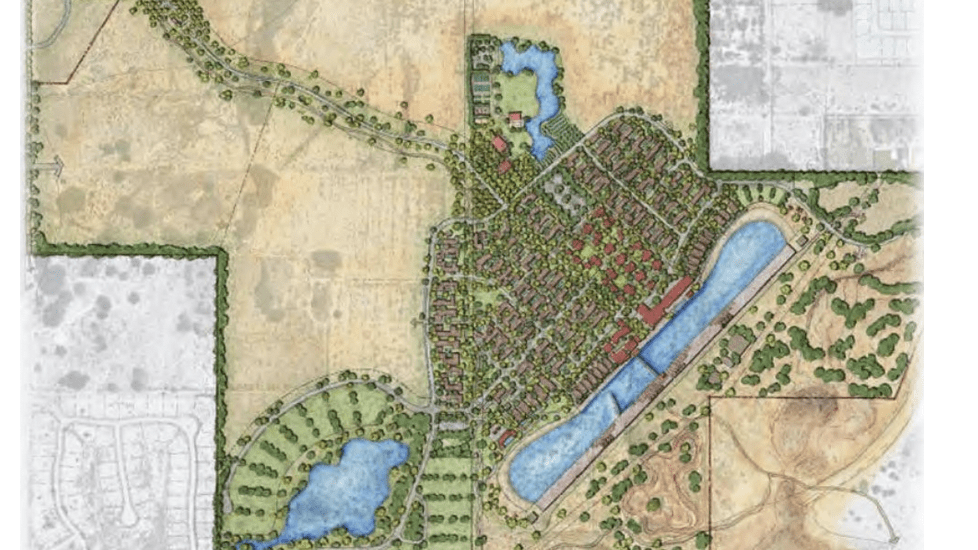
So what is the exactly is the development? And its proposed time scale? Taken straight from the Environmental Impact Report:
“The Project consists of a master-planned themed resort comprised of a recreational pool (wave basin), a 150-key hotel, 104 attached dwelling units, 496 detached dwelling units, and 60,000 square feet of retail use . . .
The Project is anticipated to be constructed in phases, with Phase 1 (2021) including resort (wave basin and hotel uses), 104 attached dwelling units, 26 detached dwelling units, and 10,000 square feet of retail use. Project Phase 2 (2023) adds 25,000 square feet of retail. Project Phase 3 (2026) adds 470 detached dwelling units and 25,000 square feet of retail use . . . encompassing an area of approximately 929 acres.”
As expected, water usage and traffic increase were of top concerns. Also, not as obvious, were issues regarding lighting and fire danger.
The full draft EIR and appendixes can be viewed here. It covers all mentioned above, plus reports on air quality, geotechnical, cultural, biological, energy and paleontological aspects, as well as a bat survey. You can also view the council meeting in its entirety here.
To save you having to trawl though the draft EIR and the 3 1/2 hour meeting we’ve collated some of the highlights as well as some of the resident’s outstanding concerns mentioned in the meetings.
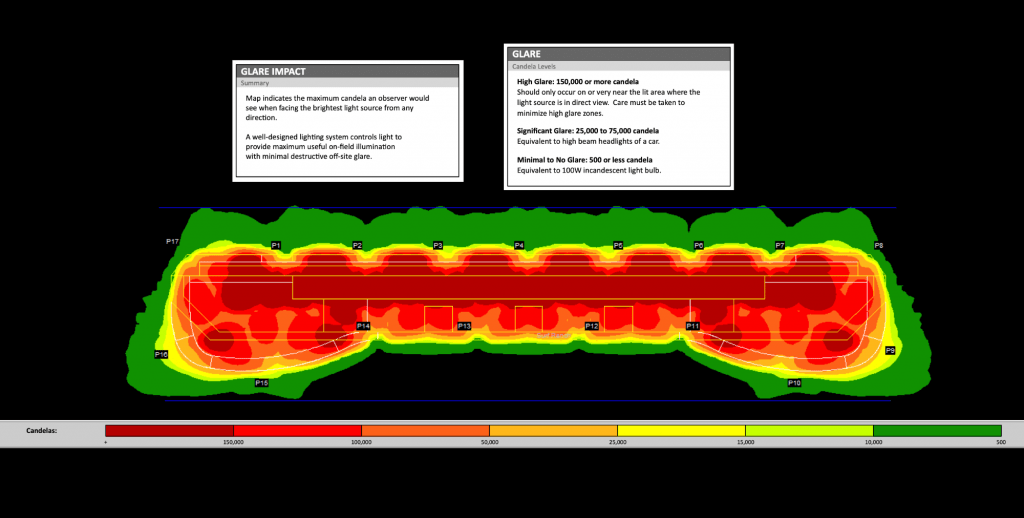
Lighting
The main area of concern are the seventeen lights on eighty foot pools set to illuminate the wave basin. Specifically, possible light spill onto surrounding areas. It’s all very well being able to see the wave at night, but you don’t want that kind of illumination searing through the curtains of the lounge room across the road.
The EIR shows results of tests from the Lemoore pool (aka Kelly’s Wave) and is measured in units of Candela (Latin for candle – there you go. This article’s already paid off for you) with one Candela (cd) being approximately the brightness of, you’ve guessed it, a burning candle.
We could delve deeper into wavelengths, luminosity and radiant intensity of such a unit of measurement – I mean if you’re having trouble sleeping or something – but that’s the general gist of it.
To put that in perspective, a 25 W compact fluorescent light build emits around 135 cd. But if you focus that same light into a 20 degree beam the same bulb will have an intensity of 18,000 within said beam. So the focussing of the light beam and shielding / shade around the bulb are critical to avoid unwanted light spillage.
Speaking out in concern re: lighting, several people mentioned how light pollution would affect views of the night sky. And local resident Sandra Stratton provided photos of lights on sixty foot poles where light spillage was visible from six miles away. Though the lights in these photos featured regular, non shielded, stadium / football field bulbs. Which as Councillor John Peña mentioned, weren’t approved by the council.
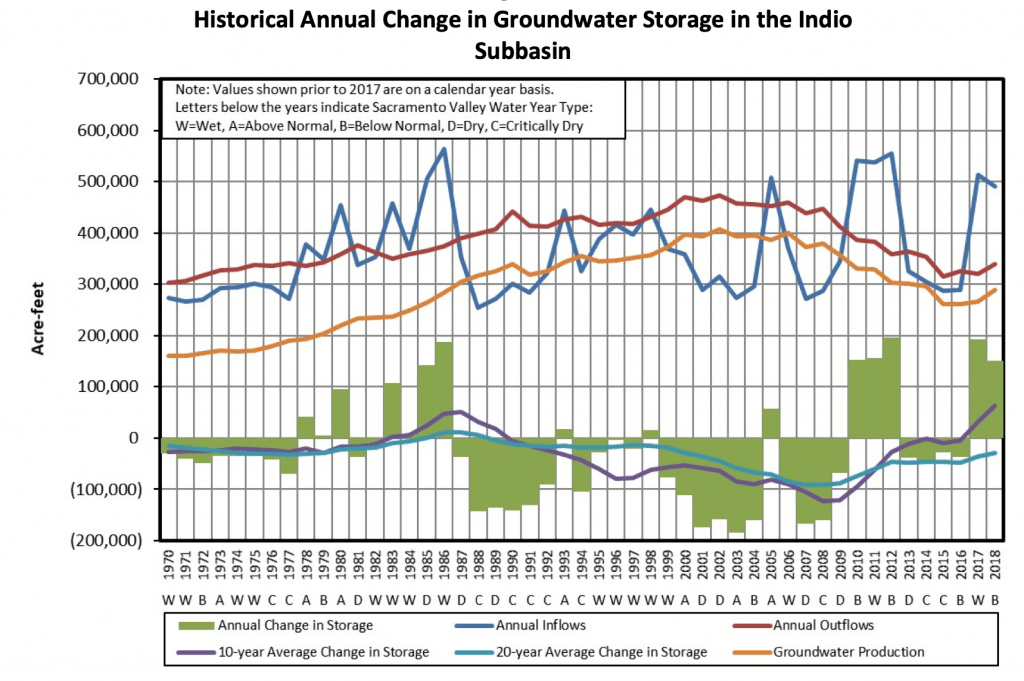
Water
A precious resource in a desert, water has been the prime matter of unease for those opposing the development. Concerns from the water source, to evaporation in the wave pool were raised.
According to the EIR the Coachella Valley Water District (CVWD), “Colorado River water is delivered by an underground irrigation distribution piping system from the approximately 120-mile canal to farms and a growing number of golf courses in the Coachella Valley. Since 2009, CVWD began recharging the aquifer in the eastern Coachella Valley with this source.”
It goes on to state, “In addition, CVWD has recognized the need to provide other sources of water to meet the needs of the Coachella Valley. CVWD has been recycling reclaimed wastewater since 1967 and operates five water reclamation plants, two of which currently recycle water. Recycled water is currently used for golf course and greenbelt irrigation in the cities of Palm Desert, Indian Wells, and Indio, thereby reducing demand on groundwater in the basin.”
Though “CVWD’s recycled water facilities do not currently extend to the Project vicinity. However, the Project is proposing to utilize an existing irrigation line for common area lakes and for irrigation of common area around the development. This could provide a source substitution of recycled water.”
So while opening a wave pool in a drought is seen by some concerned members of the community as foolhardy, the local water district has deemed it ok.
From the council meeting slide presentation . . “A water supply assessment was prepared and approved by the CVWD. Water demand of the project will be 958.63 acre-feet per year. CVWD has sufficient water supplies to serve the project during normal, single dry and multiple dry years from multiple water sources, including groundwater and supplemental allocations.”
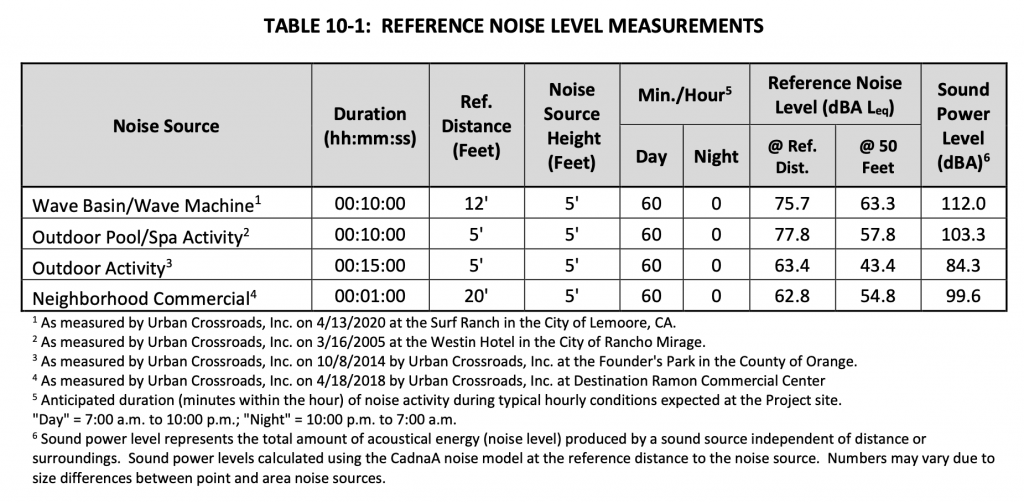
Noise
The world of acoustics is a complex one. And the number of sound measurements taken and modeled in the making of this EIR are staggering. From traffic, construction to wave pool operating noise.
So in layman’s terms, the noise of the wave pool machinery from 12’ away is around that of a vacuum cleaner. And at 50’ it’s akin to an air conditioning unit.
Concern was also raised of the possibility of constant noise from PA announcements, jet skis and traffic during event windows – which the development has been granted four per year, of up to four days each – and traffic concerns with the amount of short term/hotel room rentals and hours of operation.
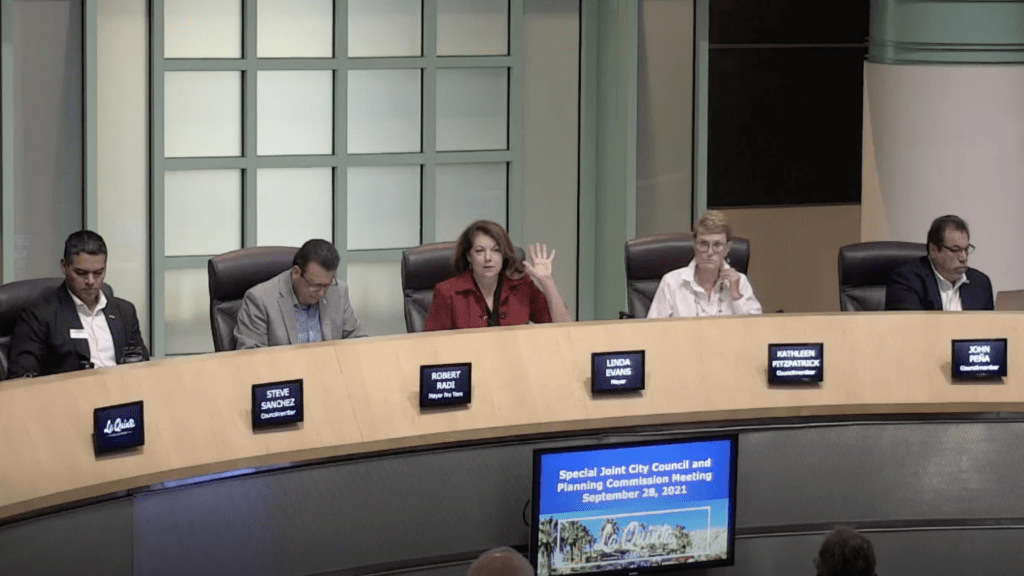
Residents opposed to the project have listed concerns on the Say No To The Wave website with their main issue being the rezoning from residential to tourist/residential/commercial.
“Understand that the lifestyle and culture of our Southeast La Quinta community will be forever changed from its current sublime tranquility,” the website stated. “And (it will be) replaced with a never-ending cycle of sporting events and other ‘party festival-like’ attractions. This does not belong in a residential area.”
Present at the council meeting was Dave Hilts, local resident and president of the Coachella Valley Surf Club. He disagrees that Coral Mountain will create a “never-ending cycle of sporting events and other ‘party festival-like’ attractions.”
“Noise, traffic and light pollution were big topics [at the meeting] and many were concerned about these issues,” said Dave. “On traffic, I can say that during the Coachella music festival, there are thousands of cars. Having been to a few festivals I can say there are several ways to divert traffic and I am amazed how well the Coachella people handle this. But for this development, if it’s just the hotel that generates the traffic it won’t be all at once, but rather a slow flow.”
Hilts was also confident the lighting and noise could be negated.
“The lighting will have to be studied more as I am not familiar with how the elevations will block the lighting but it was mentioned [in the meeting] that a wall was going to be built to block both the lighting and the sounds.”
Hilts added that it was ultimately up to the council to determine whether the benefits of the project would outweigh its significant impacts.
“All impacts can be mitigated to less than significant levels except for aesthetics: the impacts to views of Coral Mountain and greenhouse gas emissions.”
So where does this leave the project? From here, there will be further meetings and consultations. As councilor John Peña said, “This is a draft EIR that we’re looking at . . there’s going to be more analysis.”
We’ll keep you updated.
Related Coverage
